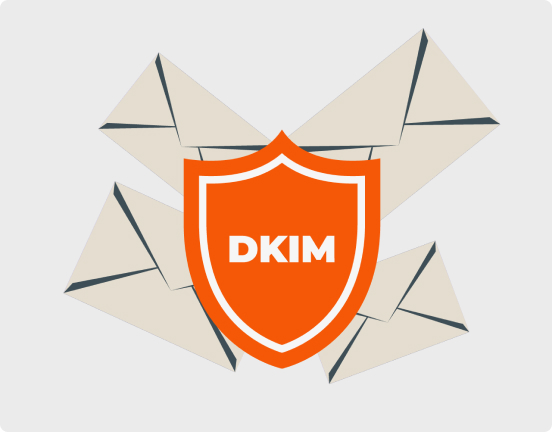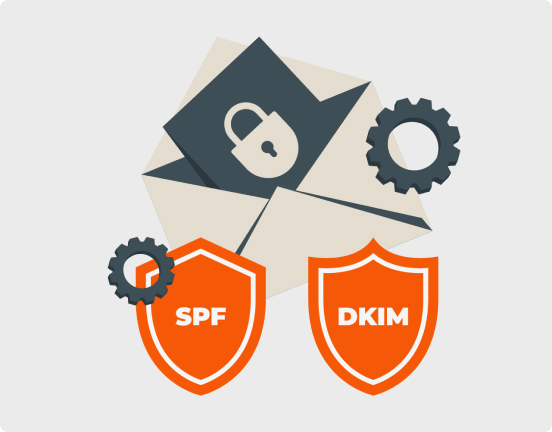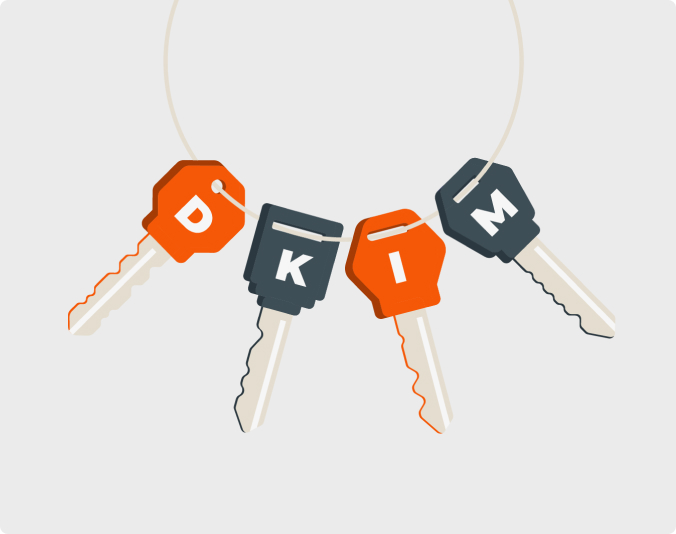In the evolving world of email communication, ensuring both security and user confidentiality is crucial. DomainKeys Identified Mail (DKIM) plays a key role in protecting email integrity while respecting user privacy. This article explores how DKIM enhances email security, its impact on user confidentiality, and the importance of balancing both aspects.
What is DKIM?
DKIM (DomainKeys Identified Mail) is an email authentication protocol. It allows the sender to attach a cryptographic signature to their emails. This signature, stored in the domain’s DNS records, lets the recipient’s email server verify the email’s origin and confirm it hasn’t been altered during transit.
By verifying the sender’s identity and ensuring email integrity, DKIM combats spoofing and phishing attacks, two major email threats.
How DKIM Enhances Email Security
- Authenticity Verification: DKIM confirms that an email originates from the claimed domain. If the cryptographic signature matches the public key in the domain’s DNS record, the email is verified as authentic.
- Protection Against Tampering: DKIM signs email headers to ensure the content remains unaltered during transit. Any changes invalidate the DKIM signature, marking the email as suspicious.
- Foundation for Advanced Protocols: DKIM works with SPF (Sender Policy Framework) and DMARC (Domain-based Message Authentication, Reporting, and Conformance) to create a robust email authentication framework. This improves security and reduces the chances of legitimate emails being flagged as spam.
User Confidentiality and DKIM
Although DKIM is a security measure, it also impacts user confidentiality. Key points include:
- Limited Scope of Authentication: DKIM authenticates the domain, not the individual sender. This maintains email integrity without exposing personal details.
- No Access to Email Content: DKIM’s cryptographic signature is based on headers and body but does not expose the actual content. This protects user data while verifying authenticity.
- Data Handling Transparency: DKIM relies on public keys in DNS records, so sensitive user data is not shared for verification.
Balancing Security and Privacy
DKIM enhances email security, but its implementation must balance user privacy to build trust. Best practices include:
- Adopt a Holistic Email Security Framework: Use DKIM alongside SPF and DMARC for comprehensive protection without compromising privacy.
- Minimize Data Exposure: Include only essential data in the email headers signed by DKIM to avoid unnecessary exposure.
- Educate Users: Inform users about DKIM’s role in securing their emails and maintaining confidentiality. Awareness fosters trust and better security practices.
- Regularly Monitor and Update: Monitor DKIM implementation and update DNS records to keep cryptographic keys secure and effective.
The Role of DKIM in Modern Email Infrastructure
In an era where email is a primary communication tool, DKIM is vital for safeguarding security and user trust. By ensuring email authenticity and integrity, it protects against phishing and spoofing. At the same time, its design safeguards user data confidentiality.
For businesses, implementing DKIM is more than technical excellence—it’s a commitment to secure and trustworthy communication. As email threats evolve, balancing security and user confidentiality with DKIM will remain central to effective email management.




